It’s 2023, and the amount of layoffs we’re witnessing is through the roof. There’s even a website with a dedicated tracker showing how bad the job market is. But…if you happen to be on the hiring end now, you’re in recruiting paradise. There’s only one problem – countless resumes to screen.
But it doesn’t have to be that way. Today, we’ll show you what resume screening is and what it can be with a bit of imagination and the help of some amazing hiring tools.
Let’s dive in.
TL;DR – Key Takeaways
Resume screening is the process of reviewing applicant resumes to see if they meet the predetermined criteria outlined in the job description and the minimum and preferred qualifications.
Resume parsing is the process of automatically analyzing resumes to find suitable candidates quickly, e.g., by screening keywords.
Automated resume screening is quick, consistent, scalable, and provides data you can analyze. However, there are disadvantages: it can also miss great candidates, cannot interpret different resume formats, and can be biased if not trained against biases.
Manual resume screening gives you a better chance of understanding candidate career paths and experience and is a better way to assess for company culture fit. However, it’s also more time-consuming, prone to biases, and leads to fatigue.
A hybrid approach works best for various situations: when you have too many candidates, when you’re short on time, when you need to fill a position quickly, you have high turnover, not a lot of data, etc.
Resumes are inherently flawed for a few reasons – candidates lie in them, they lead to unconscious biases, and they are poor predictors of future job performance.
Skills tests fit the bill perfectly, allowing you to screen candidates based on their ability to do the job, not their resumes. Moreover, they reduce hiring bias. Check out the Toggl Hire test library to browse skills assessment templates!
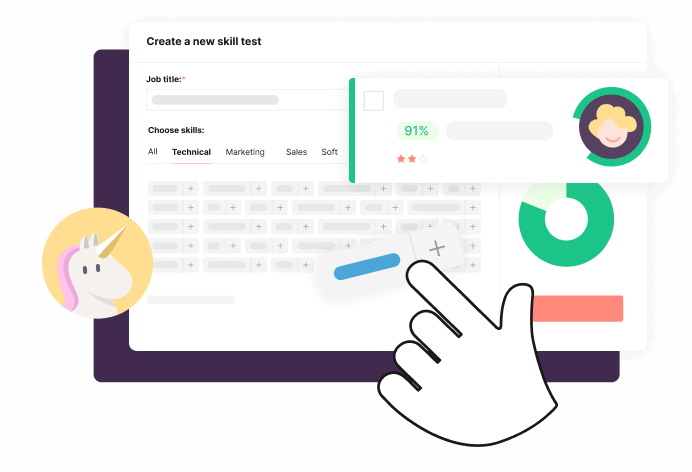
What is resume screening?
Resume screening is the process of reviewing job applicants’ resumes to determine if they meet the requirements for a position. During resume screening, the HR professional determines if the candidate’s experience, education, and skills meet the minimum qualifications and the need outlined in a job description.
As the average job ad gets hundreds of applicants, resume screening is essential to weed out unqualified applicants who are a poor fit for the job. And since reading hundreds of resumes can translate to a time-consuming resume screening process, many HR teams use automated resume screening tools.
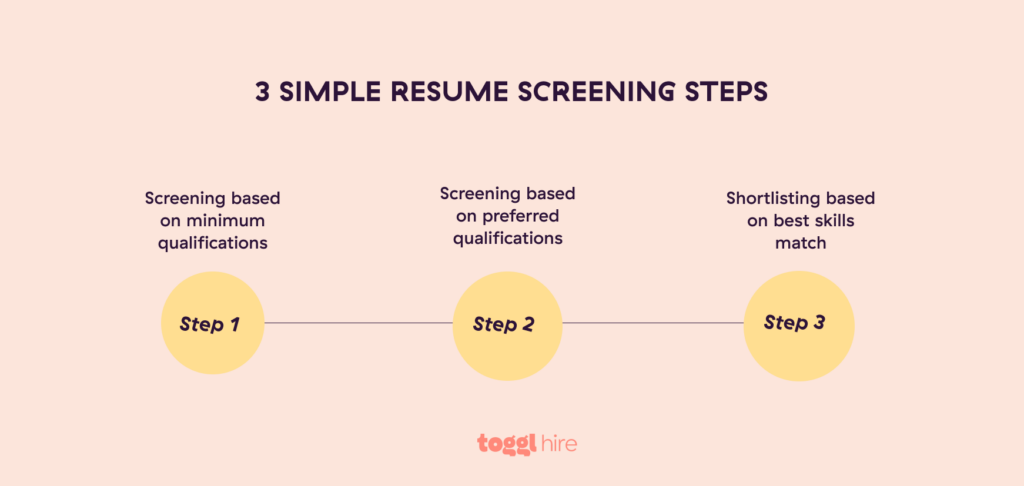
What is resume parsing?
Resume parsing is an automated way to screen resumes and get a lot of work done at once. In this automated method of screening resumes, a software tool analyzes resumes (in PDF or Word documents) to find the most relevant candidate information automatically.

This method of screening resumes allows the hiring manager to find qualified candidates more quickly, as it highlights specific requirements that match the job description. For example, specific keywords, years of experience, desired skills listed, education level, etc. Most applicant tracking systems come with parsing as a feature.
Manual resume screening vs automated resume screening: Pros & Cons
Wondering which of the two approaches is better for your recruiting teams? We’ve compiled the pros and cons of both in a table below:
| Method | Pros | Cons |
|---|---|---|
| Automated Resume Screening | 1. Efficient and time-saving 2. Consistent and unbiased (if well-programmed) 3. Scalable for large volumes 4. Can learn and improve over time (with AI) 5. Provides data for analysis | 1. May miss out on unique candidates 2. Can struggle with non-standard resume formats 3. Potential for bias if trained on biased data 4. Over-reliance on keywords 5. May not fully assess soft skills or potential |
| Manual Resume Screening | 1. Allows nuanced understanding of candidate 2. Can consider non-traditional career paths 3. Can better assess potential and cultural fit 4. Can interpret varied resume formats | 1. Time-consuming 2. Prone to human bias and errors 3. Not scalable for large volumes 4. Can lead to fatigue and overlooking qualified candidates |
So, which one is the better option for you? We would argue that it’s not automated or a manual process. Instead, you may want to try a hybrid approach to resume screening.
Why a hybrid approach is the best option for screening resumes
You know the pros and cons of both automated and manual versions of resume screening. A hybrid approach mixes the best of both worlds – it uses HR technology to save time and human judgment in those situations when a computer just can’t decide if a candidate is a good fit for the job.
Most companies have a high volume of applications.
You could receive hundreds of resumes for a single job ad. Use an applicant tracking system or another piece of recruitment technology to weed through the first batch of resumes and then manually go through the promising ones in the lot.
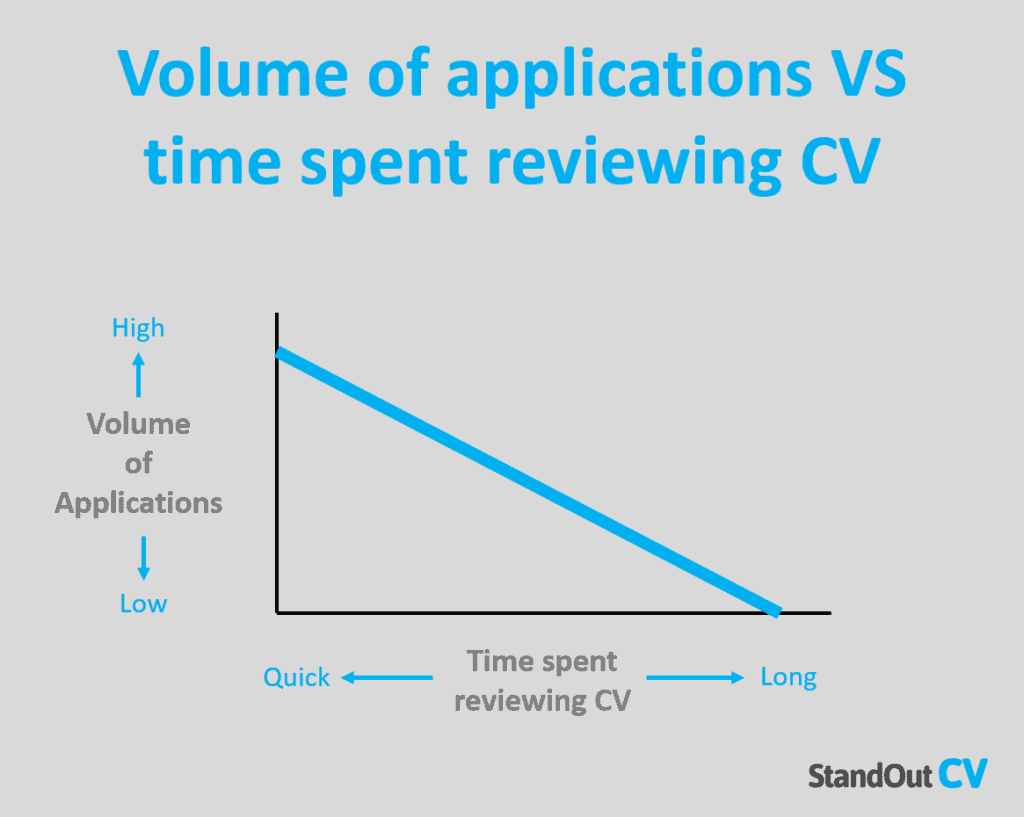
If you’re rapidly growing, you’ll need to hire a lot
Even though the recession is hitting us hard in 2023, plenty of companies are looking to grow their headcount massively. If you’re lucky to be in this situation, you know you’ll have to plow through hundreds and maybe thousands of resumes for your job postings. Use tech for the initial resume screening and manually review the handpicked, best candidates.
You have positions that remain unfilled for long periods of time
If you’re taking too long to fill a position, you may need a helping hand. An automated tool for resume screening will help you whittle down your hiring process to days instead of weeks by eliminating those that don’t have the minimum required qualifications for the job. It also means you only interview candidates who meet the minimum qualifications – more quality time with quality applicants!
Your resume screening is inconsistent
Different recruiters may have different standards. Some will see job hopping as a red flag; others will write it down as a side effect of a growth mindset.
Starting off with automated resume screening ensures that every candidate gets the same chance in the hiring process.
You’re lacking data
If you don’t have enough data on your hiring process, automated resume screening tools can help sift through large data sets at once. You can learn who your applicants are at a glance across your job posts – and what changes you need to make to attract better talent.
You have a high turnover rate
A high employee turnover rate might be a symptom of many problems in your recruitment process:
- Your hiring practices for determining job and company culture are ineffective.
- Your workplace culture makes new hires feel unwelcome.
- There’s a misalignment between your job ads and actual role responsibilities.
- Your onboarding program needs a revamp.
- Your interview process suffers from biases and a lack of structure.
While some employee attrition is natural, a high turnover is never an easy challenge to tackle for the recruitment team. Automated tools for resume screening can help find weak spots in your processes and improve important metrics like time to fill and cost to hire.
As you can see, screening resumes automatically has plenty of benefits. However, you really need to blend it with a human who is in charge of overseeing the entire process. Tech can do amazing things, but never rely solely on apps and AI to determine the best applicant in your recruiting process.
Resume screening techniques to boost efficiency
If you want to screen resumes more efficiently, you need to find ways to remove unqualified candidates from the process early.
Here are some tips to make the process of reviewing resumes more efficient.
Set your minimum and preferred qualifications. Whether you screen resumes manually or with an ATS, you need to have a baseline.
Determine the type of relevant past experience. What should the suitable applicant’s work history look like? Write those roles down, either for yourself or as keywords for your screening software to recognise suitable candidates. Add titles and be flexible.
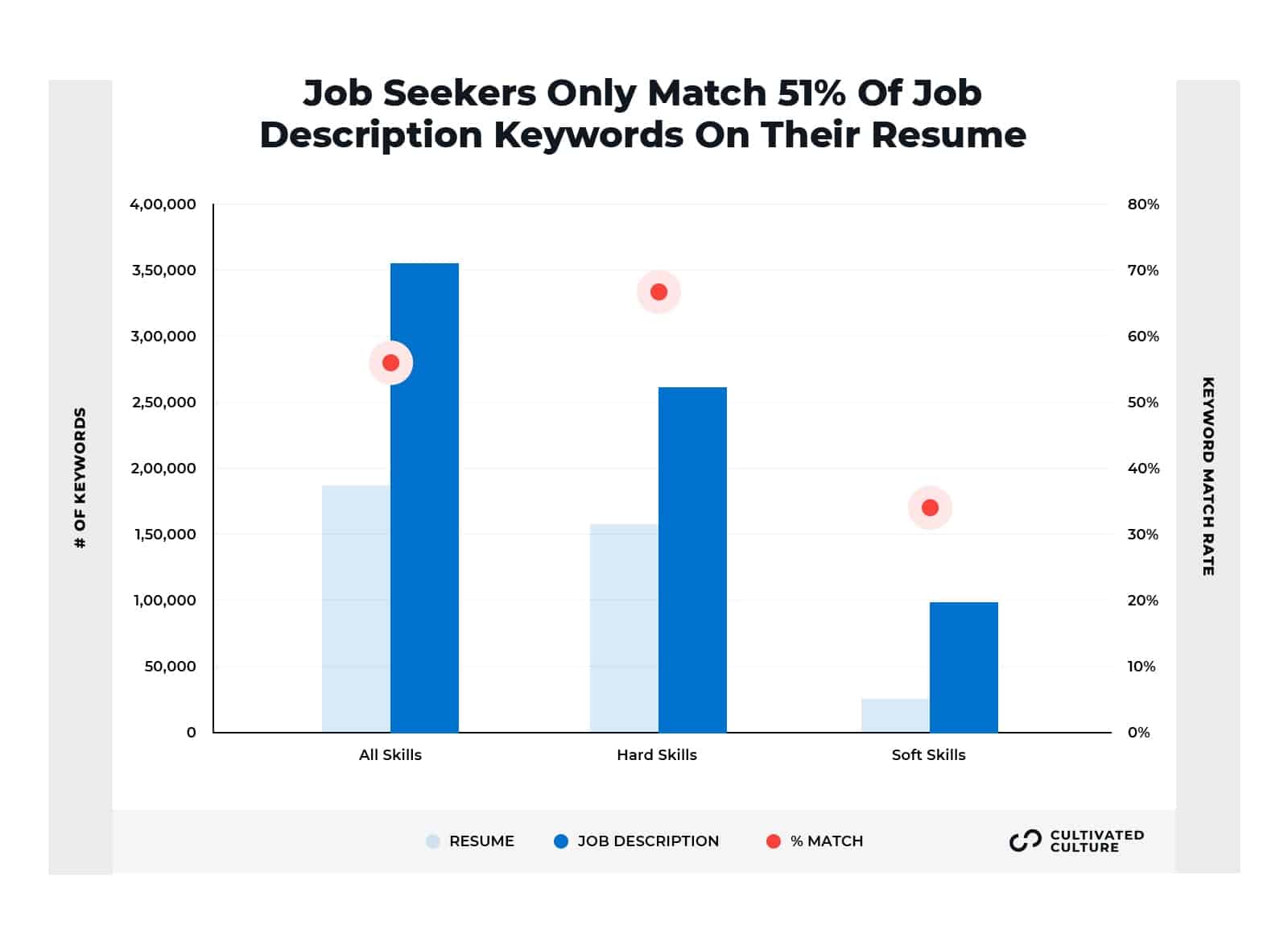
Set a baseline for the years of previous experience. A range is a good starting point. This is also the point where you want to review your attitude towards job hoppers, i.e. candidates who change jobs frequently. They say that months at a startup can equal years of experience elsewhere.
Disregard long resumes. A good way to shortlist candidates is to only look at resumes up to two pages long.
Look at resume customization. Some job seekers will list every job post in their lives. You want to look for candidates who add the preferred qualifications for the job and not every previous job under the sun.
Whether screening manually or with an app, these are excellent starting points for reviewing resumes.
Behind the resume curtain: the limitations of screening resumes
There is a reason why resumes are becoming a part of history. Neither candidates nor hiring managers are a fan of them for various reasons. But let’s get back to the topic: here are some limitations of the resume screening process for hiring.
First off, resumes, as a way to screen candidates, can fire up various types of unconscious biases.
You may unconsciously disregard a candidate because of their gender, age, education, work experience, location, and various other factors. You’re less likely to make an objective, unbiased decision and hire a person who knows how to do the job.
The second reason why resumes hinder the recruitment process is that people lie. In fact, about 72% of candidates admit that they lied on their resume when looking for a job. You can eventually find out that they embellished their resume, but at that point, you’ve wasted precious time and money on an unpromising job candidate.
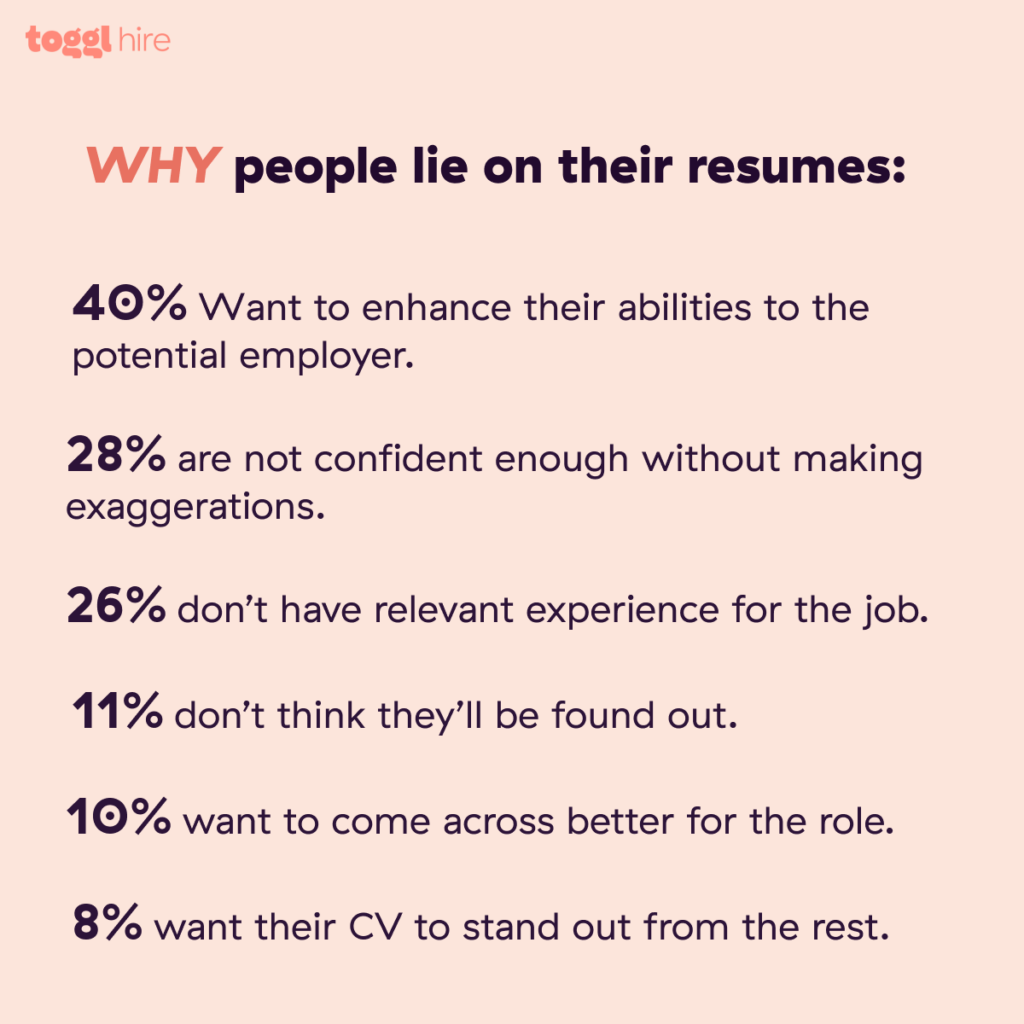
Recently, The New York Times ran a story with this opening line: “Mr. Santos, a Republican from New York, says he’s the “embodiment of the American dream.” But he seems to have misrepresented a number of his career highlights.” Among many other made-up facts, a successful politician in the United States boldly claimed he catapulted himself from a New York City public college to become a “seasoned Wall Street financier and investor”. Turns out, he never even worked there!
The third and perhaps most important point is that resumes are poor predictors of job performance. They can tell you if potential job candidates are good at writing resumes. However, as far as doing the actual job, you must get proof of competence.
Trading resumes for skills assessments in your hiring process
If you’re tired of manual screening and resume screening software only solving a part of your problem, it’s time to try skills assessments.
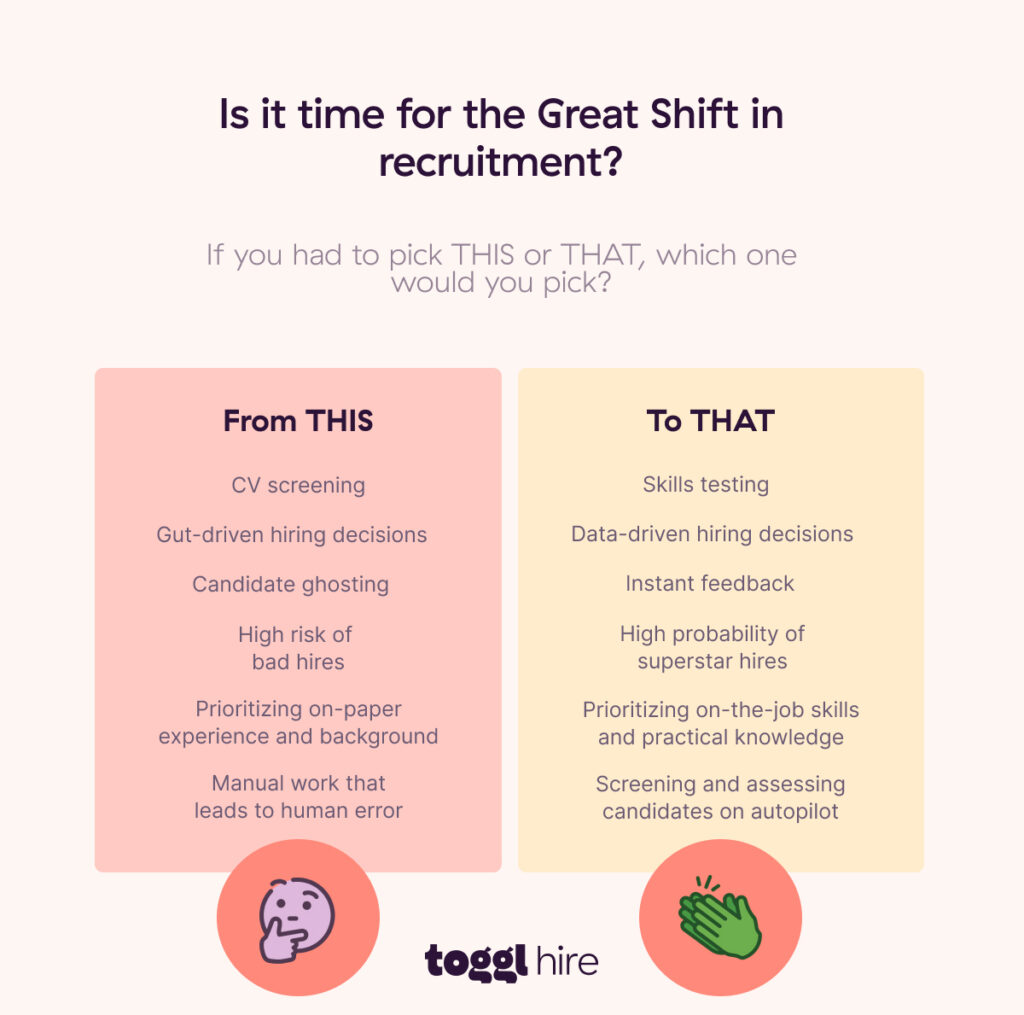
Tools like Toggl Hire help businesses test applicants’ skills and knowledge at any step of the hiring process. Just take a look through our test library to find a vast number of roles and skills you can assess.
But why would you test skills if you can just automate resume screening?
Skills tests attract more candidates
Preparing a resume and adjusting it to the job description takes time. Instead of asking eligible candidates to send in a customized resume, give them a short skills test. It’s fun and in 15 minutes, both you and the candidate will know if you’re a good fit for each other.
You’ll also have an easier time tapping into a pool of passive candidates who are not actively browsing job boards – but can’t resist a 15-minute skills quiz!
Skills tests screen relevant job skills, not resume-writing skills
With a skills test, you can see if candidates can do what the job descriptions require. Way before the interview process, you’ll find out if they can walk the walk. And as one of the most reliable predictors of future job success, it can help you assess what really matters – the ability to drive results and accomplish work tasks (not years of experience or titles held in the past!).
Skills tests reduce unconscious bias
No one is immune to unconscious bias. However, skills tests help by giving you a look at the candidate’s skills first before you even get a chance to see their age, experience, background, or any other personal information. This leads to a more diverse and more competent team of people.
Skills tests are great for employer branding
Your candidates will love skills tests. They can not only forget about resumes but also immediately get feedback about their test results. Your candidates can apply more quickly, and you’ll never ghost them, as every candidate gets feedback on their test results.
Say goodbye to manual screening and embrace the future of hiring
The resume is far from dead and we’ll screen resumes in the foreseeable future. However, the future of hiring combines resumes with other, more practical ways to select candidates for your job openings.
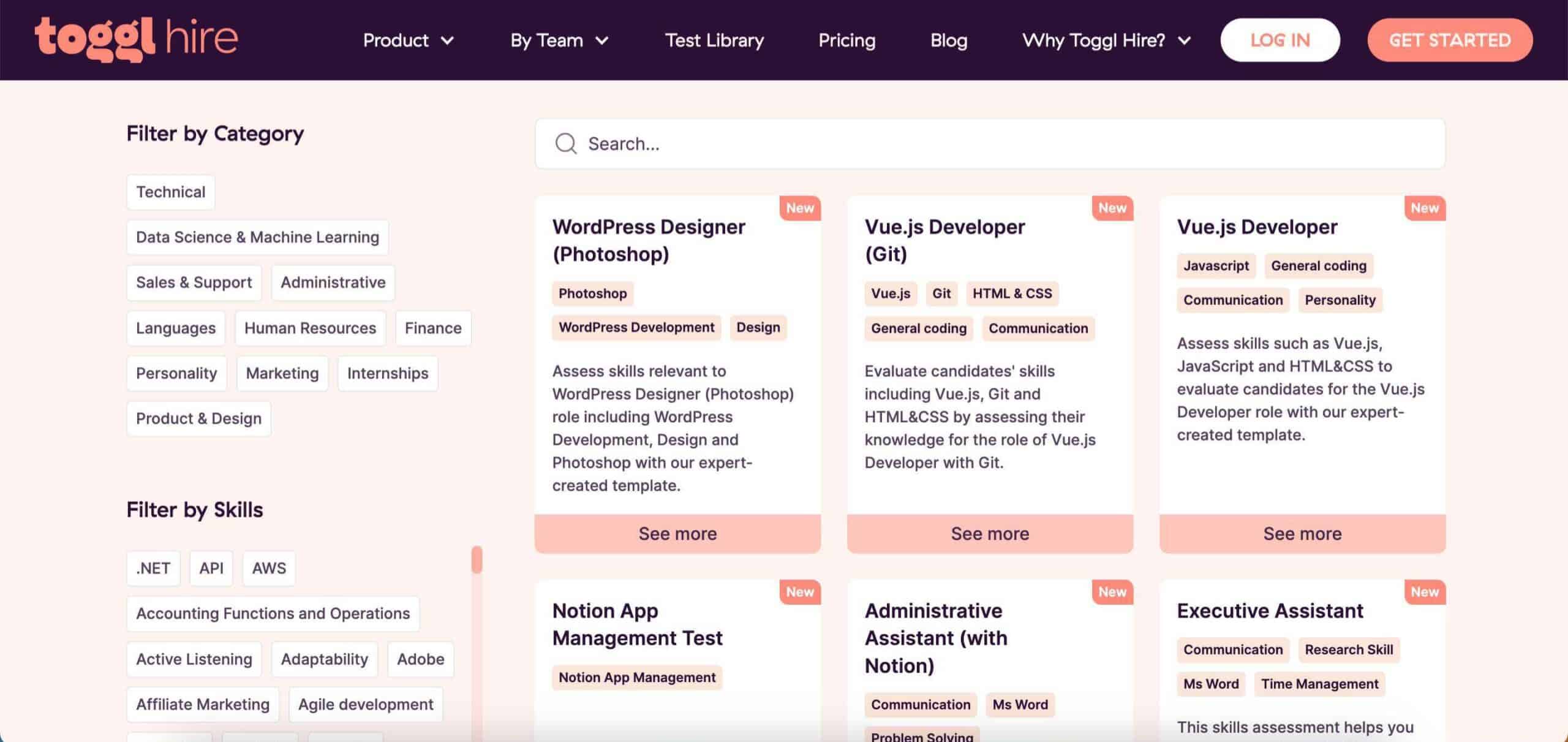
Sign up for Toggl Hire today and start hiring applicants based on job skills, not resume writing skills!
Juste loves investigating through writing. A copywriter by trade, she spent the last ten years in startups, telling stories and building marketing teams. She works at Toggl Hire and writes about how businesses can recruit really great people.



